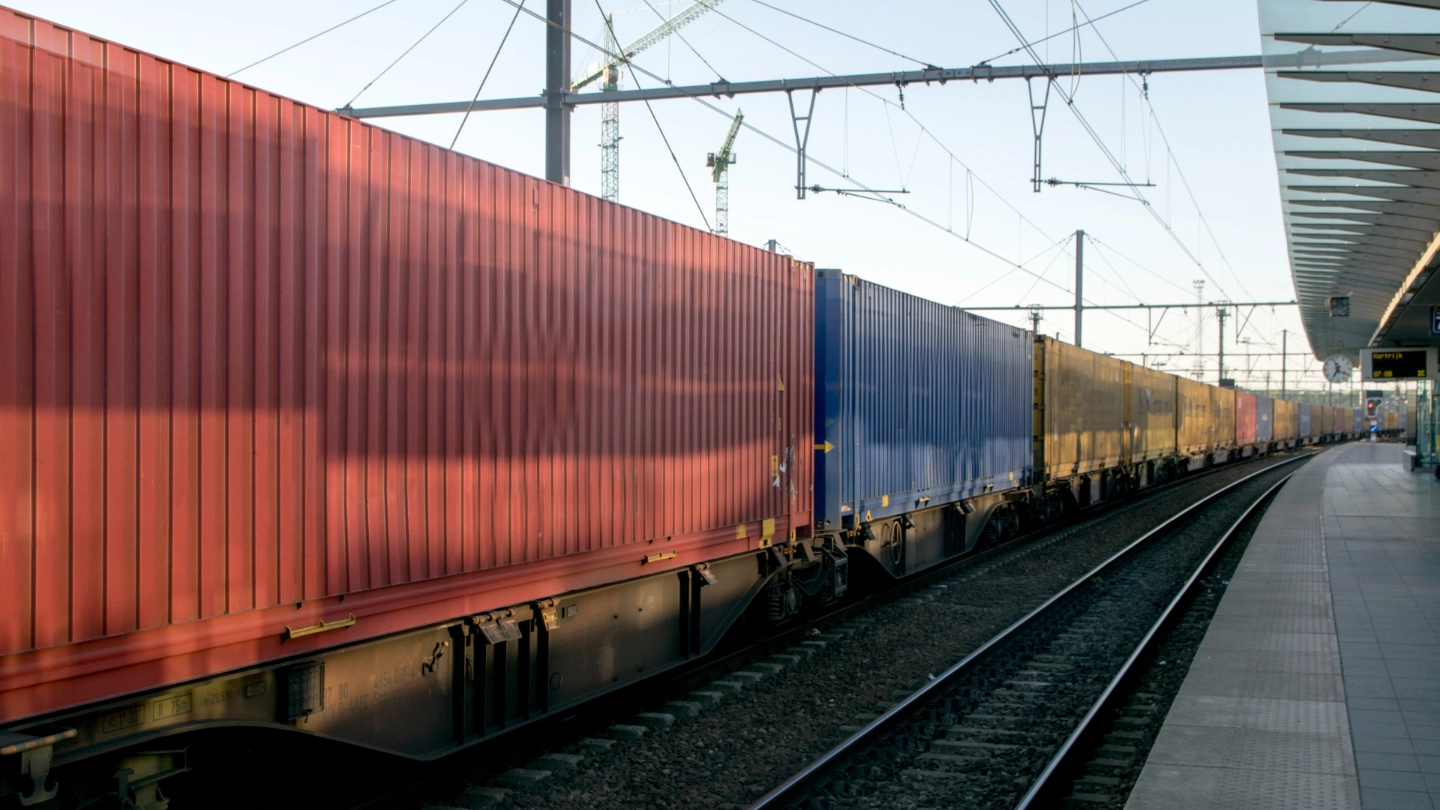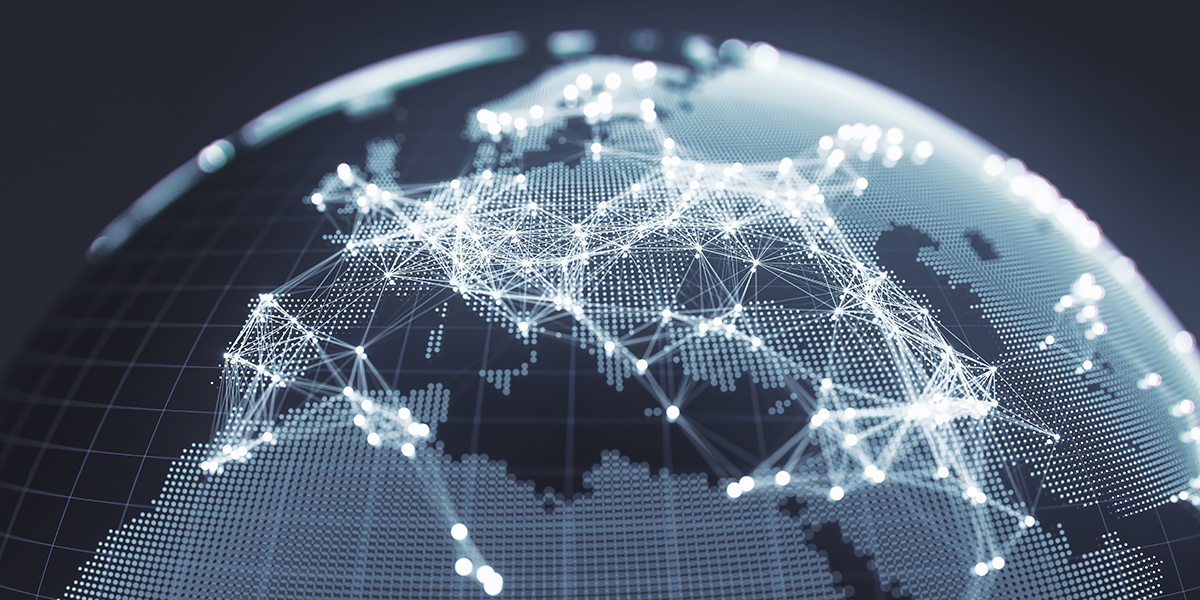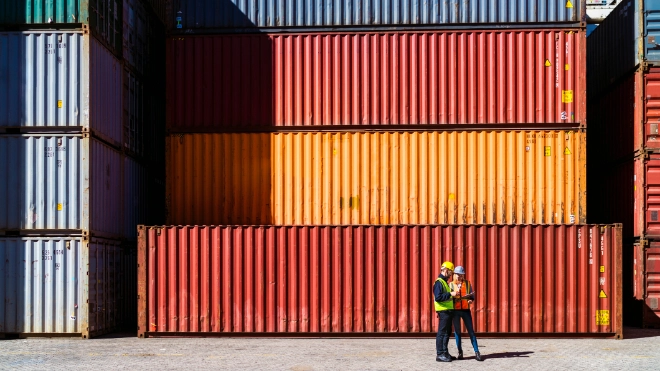
The IMF’s annual meeting of economists and finance ministers took place against a backdrop of resilience, risk, and an accelerating momentum towards multipolar global trade.
Visitors to the annual meeting of the International Monetary Fund (IMF) this month may have left with a profound sense of uncertainty. Was the global economy in better shape than expected, or standing at the cliff edge with one foot hovering over the precipice?
Mixed messages were everywhere. Economists in Washington talked of resilience in the face of trade tensions. Away from the meeting rooms, China and the US exchanged damaging blows on tariffs and rare earth elements.
Finance ministers were told that the unprecedented investment in AI was both a buffer against economic stagnation and a serious cause for concern.
Uncertainty is the one certainty in this storm. Global trade is in flux. China’s export restrictions on rare earth materials show an economic superpower baring its teeth. At the same time, President Trump’s scattergun tariff policy is stretching allegiances, undermining trust and rerouting trade flows.
As Beijing emerges as a strategic and economic rival of the US, the transition to a multipolar world is accelerating.
However all this plays out, the underlying message from the IMF’s annual meeting was that businesses need to prepare for a new global trade landscape. The clash of economic superpowers creates real risk, but the new economic order also presents opportunity.

The good news: economies are holding up
One theme of the IMF event was resilience. Given the pressures brought to bear by Washington’s tariff policy, US-China trade tensions and conflicts in Ukraine and the Middle East, the global economy is holding up reasonably well.
In Atradius’ most recent Economic Outlook in July, we predicted global growth of 2.4% in both 2025 and 2026, much of it driven by emerging economies. That’s hardly stellar, but it is progress. Such resilience in the face of severe disruption is the result of a number of factors.
“The inflationary impact of US tariffs has been limited so far,” says John Lorié, Chief Economist at Atradius. “The current US tariff structure is still limited in size and scope, and upcoming legal decisions may reshape the administration’s approach. In addition, tariffs have dampened demand and injected uncertainty, offsetting price pressures for now. We do expect US inflation to rise by the end of the year, however.”
Other factors include an aggressive US fiscal policy that is boosting high-income consumption and the AI boom. AI investment is creating wealth effects and supporting demand, especially in the US. Trade in AI-related goods is also helping to shore up global commerce.
Europe has surprised to the upside, with inflation and interest rates stabilising at 2%. Limited tariff retaliation in the face of US provocation has helped. These factors support a more positive regional outlook for 2025.
We do expect US inflation to rise by the end of the year
Trade diversion accelerates, redrawing the global map
AI-based trade was one reason for a 2.4% global growth in trade in the second half of 2024. A frontloading of orders to counter tariff threats and greater trade between nations of the global south were other factors.
Our own analysis found that frontloading also buoyed trade growth in the first quarter of 2025, but we expect contraction in the second half of the year. We predict that trade growth will slow to 1% overall in 2025, before recovering to 2% in 2026. The World Trade Organisation (WTO) is more pessimistic, forecasting just 0.5% growth this year. Trade growth will be especially weak in the US, Canada and Mexico.
The feeling at the IMF was that, overall, trade is subdued but stable, but also that trade flows are changing. “Trade diversion is accelerating, with South-East Asia gaining share,” says Lorié. “That shows the impact of businesses trying to side-step tariffs or tariff threats and diversify supply.”
Despite considerable pressures, trade continues under a rules-based system, and stability has been maintained for the most part. Three quarters (80%) of global trade continues under existing rules. This despite US insularity and damaging dysfunction at the heart of the WTO’s dispute resolution mechanism.
The rules-based system continues to function through creative arrangements and bilateral frameworks that maintain core principles. However, businesses demand predictability and WTO reform remains a priority.
Trade diversion is accelerating, with South-East Asia gaining share
Resilience masks growing risk
The resilience of economies and trade in the face of severe pressure is heartening, but can it last?
We predict that advanced economies will grow by just 1.3% in 2025 and 2026, and even this meagre progress is at risk. The most obvious threat, widely discussed at the IMF meeting, is an escalation in the US-China trade war. That could bring global growth close to zero in 2026.
The possibility was brought vividly home by a ratcheting of tensions in the days leading up to the event. China restricted the export of rare earths, a critical component in a wide range of goods and one over which it has a near-monopoly. Trump responded by threatening 100% tariffs on Chinese imports. The tone has become more conciliatory since, but China’s assertiveness is telling. The days of US trade hegemony are over.
The twist here is that the two powers are locked in a toxic relationship. The US (and everyone else) needs China’s rare earths and China needs advanced US semiconductors, creating a fragile interdependence. Businesses should prepare for ongoing cycles of tension and detente and the ever-present risk of supply chain disruption.
Other risks to resilience include overvalued equity markets driven by unprecedented investment in AI, and the growing problem of public debt. “Debt sustainability is a concern in the US, Japan and parts of the eurozone as government borrowing costs rise,” says Lorié.

The new multilateralism: a wake-up call for business
For businesses, it all adds up to an accumulation of uncertainty. Investment decisions are difficult enough in a precarious economic climate; even more so when trade tensions are high and policy unpredictable.
The encouraging message from the IMF meeting was that the multilateral approach to trade based on common rules, consistency applied, isn’t dead. But it is evolving and the transition won’t be easy. The US has stepped outside the rules-based system. The intensifying rivalry with China is creating new global alliances, which in turn affect trade flows and cooperation frameworks. Reshoring and friendshoring have become buzzwords of the age.
The end result will likely be a multipolar world in which China plays a far more prominent role. This was happening anyway, but the trend has been supercharged by the current US administration’s erratic America-first approach.
The rules-based system is just about holding together. Greater cooperation between friendly parties through bilateral agreements is creating opportunities. The shift to a multipolar world brings a risk of further disruption, as China exerts greater influence over trade governance, alliances shift and supply chains are reconfigured. But it also offers a chance to renew global institutions and address labour market dislocation.
For their part, businesses should prepare for a more fragmented trade environment. That means strengthening risk monitoring, diversifying trade relationships and building flexibility into supply chains.
The growth in global trade, however modest, is evidence that importers and exporters are adjusting to new challenges, but more needs to be done. In an environment of rapidly evolving risks, businesses that combine resilience with strategic foresight will be in the best position to thrive.
- The global economy shows resilience despite trade tensions, AI disruption and geopolitical instability
- Trade flows are shifting, with South-East Asia gaining share as businesses adapt to tariff threats
- Risks are rising, from US-China rivalry and rare earth restrictions to overvalued markets and public debt
- A multipolar trade order is emerging, urging businesses to diversify, stay agile and prepare for both disruption and opportunity





































